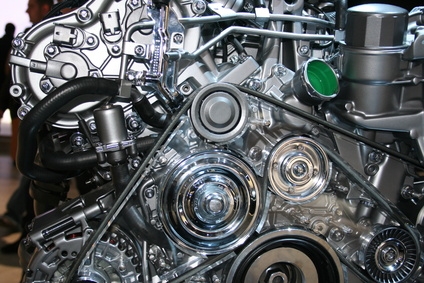
Idlers and tensioners are pulleys that are most often associated with the engine belt system of an automobile, though they are used in many other applications. Idlers and tensioners are similar in many ways but have a few significant differences.
An idler is a pulley that is used to reroute a drive belt or to take up slack. When a drive belt needs moved from one area to another an idler is often used to accomplish this. Unlike most other pulleys, the idler does not provide power to anything but simply spins freely.
A tensioner is used to hold pressure on a belt that is used to drive pulleys. The tensioner is a spring-loaded pulley that holds the belt tight to the other pulleys in the drive system. Being spring-loaded, the tensioner is also able to flex to allow some give to the system, which reduces the strain on the belt.
Both idler pulleys and tensioner pulleys are normally made with sealed bearings that may fail and need replacing. Failed bearings in either pulley often make a squealing or grinding noise, and the pulley may also be seen to wobble. A loose belt may be a sign of a failed or failing tensioner mechanism.